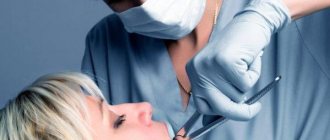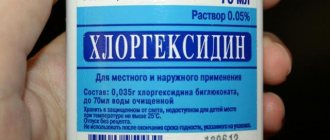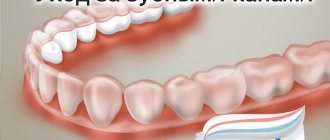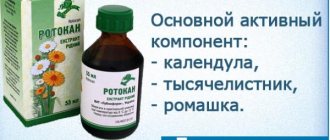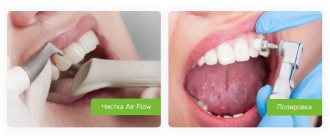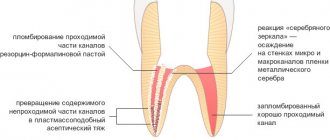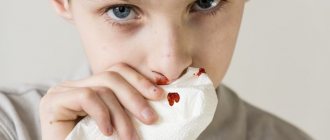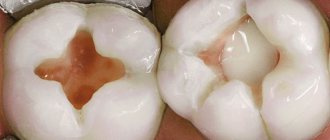What is Chlorhexidine and its action
Chlorhexidine is a very popular drug known to many people, since its scope of application is quite wide. Its main purpose is to remove pathogenic microorganisms of various categories.
Most often, Chlorhexidine is used to treat all kinds of wounds and abrasions, as well as to disinfect the doctor’s hands before examination or surgical procedures.
Can Chlorhexidine be used to treat open wounds? If previously brilliant green and iodine were most often used to treat abrasions, today Chlorhexidine is in first place among many pharmaceutical products, gradually replacing even hydrogen peroxide. The drug has no contraindications, does not cause adverse reactions, and is used not only for the treatment of injuries, but also in the treatment of certain diseases.
Chlorhexidine for wound treatment perfectly destroys microorganisms of various groups , including gram-positive and gram-negative bacteria, Trichomonas vaginalis, protozoa, as well as most viruses, including the herpes virus. The drug is powerless only against Koch's bacillus, which is the causative agent of tuberculosis.
At the same time, an important advantage of the product is the absence of a resistant reaction to it in microorganisms, that is, the bacteria being destroyed do not get used to it, do not mutate, do not adapt, but simply die. Therefore, the effectiveness of the drug remains throughout the entire treatment, regardless of how often treatments are carried out.
Side effects
An important feature of the drug is its relatively low toxicity. It has almost no effect on the cells of the human body. However, this, of course, does not mean that the drug is completely harmless. It is still not recommended to use it internally. If this happens, then you should use sorbents, such as activated carbon, and perform gastric lavage. In addition, it can cause burns to mucous membranes. For this reason, chlorhexidine should not be used to treat eye infections such as conjunctivitis. If the drug gets into your eyes, rinse them thoroughly with water. You should also avoid getting the drug on the meninges, for example during open head injuries. It is prohibited to use the drug to treat ear diseases with a damaged eardrum.
Indications for use
Indications for use of the drug include:
- Carrying out disinfection of wounds of various types, including those on mucous membranes.
- Use as part of complex therapy in the treatment of various fungal infections.
- Preventive treatments to prevent STDs.
- Treatment of oral diseases such as gingivitis, periodontitis and stomatitis.
When treating wounds, cuts, abrasions and other injuries, the solution is applied directly to the surface of the skin and injury without the use of gauze pads or cotton swabs (discs). To carry out the treatment, simply pour the composition onto the damage after preliminary cleaning.
It is important to remember that when treating skin and soft tissue injuries, bleeding should be stopped before filling the wound with Chlorhexidine, since the drug does not have a hemostatic effect.
To disinfect injured areas, a solution of concentration from 0.05 to 0.1% is used. The same solution (in the same concentration) can be used to carefully treat the surface of burns, including chemical and thermal ones. In this case, the solution will work not only as an antiseptic, but also as a means of cooling the surface, as well as washing away chemicals from the skin and the site of damage that led to the burn.
Chlorhexidine is often used for dressings instead of hydrogen peroxide. Wounds, including purulent ones, are washed with the solution, the hands of medical personnel are treated, and bandages that have dried to the wounds are watered for painless and careful removal.
Causes of drug poisoning
Taking Chlorhexidine solution orally is strictly prohibited, but this method of use is used with alarming regularity. And it's not about suicide attempts at all. Fans of healthy lifestyle practice the method of treating various diseases in such an original and very dangerous way. It is not surprising that due to damage to the mucous membranes, pathologies that were previously mild in severity begin to progress and often recur.
Poisoning can also occur due to carelessness. This drug is often prescribed to treat the throat in the treatment of respiratory infections along with cough syrups and antibiotic suspensions. If you feel unwell, it is quite possible to mix up the bottles.
A 20% alcohol solution of Chlorhexidine can be converted into vapor. In a confined space, inhaling them can lead to severe intoxication.
Wound treatment with Chlorhexidine
The main purpose of the drug is precisely the antiseptic treatment of various surfaces, not only healthy skin, but also wounds of almost any origin.
The product belongs to the group of special germicidal antibiotics, and therefore Chlorhexidine is capable of not only stopping the growth of harmful microorganisms, preventing their reproduction, but also completely destroying pathogenic elements.
If we compare the product with other drugs of the antiseptic group, we can note that Chlorhexidine has no color or any odor, which means that this antiseptic is not toxic, does not leave marks on the skin, and does not cause pain to the patient when treating wounds, which is also significant advantages.
The drug does not have a negative effect on the healing process and does not lead to the formation of pronounced scars.
Chlorhexidine is completely safe , it does not cause allergic reactions or irritation of damaged tissues, and therefore is very often used to treat fresh skin lesions and disinfect them, along with regular hydrogen peroxide.
To treat fresh scratches, abrasions, various wounds, including postoperative wounds, in order to prevent the development of infection, a solution of the drug is used in a concentration of 0.05 - 0.1%. A solution of the same concentration can also be used to treat burns, as well as wounds in the oral cavity after tooth extraction.
A one-time treatment of the wound immediately after receiving it does not exclude the possibility of secondary infection, therefore, after washing, a sterile bandage should be applied, and if it is small, it can be sealed with a bactericidal plaster.
To treat wounds, it is recommended to simply pour a small amount of the drug onto the surface, wait a little, and then carefully blot the residue with a sterile napkin. Before carrying out such treatment, it is recommended to thoroughly wash the wound and the skin around it with water and laundry soap to remove any existing contaminants.
The drug in a concentration of 0.1 - 0.2% is often used for disinfection when performing various medical procedures , for example, when removing splinters, opening calluses and small abscesses, boils, when striking wounds that have dried to the surface of bandages, bandages, and plaster. A solution of this concentration is also used to treat the hands of medical personnel.
Symptoms of Chlorhexidine poisoning
Taking a concentrated alcohol solution is much more difficult for the body to tolerate than an aqueous solution. The main signs of such poisoning:
- attacks of nausea and vomiting;
- pain in the throat, epigastric region and abdomen, heartburn, sour belching;
- diarrhea or constipation;
- impaired coordination of movements;
- migraine-like headaches;
- tremor of the limbs, turning into convulsions;
- facial redness;
- drop in blood pressure;
- thready pulse.
When inhaling vapors, shortness of breath, a feeling of lack of air when inhaling, redness of the eyes, and dryness of the nasal mucosa occur. If first aid is not provided, the victim loses consciousness.
Use of the drug during pregnancy and lactation
Pregnancy, as well as breastfeeding a baby, is not a contraindication to the use of the drug.
Using the product to treat wounds is acceptable, but with caution. The drug has no toxicity and does not have a systemic effect. When treating damaged areas of skin, only a small part of the product can penetrate the bloodstream without creating a threat to the developing baby.
The drug does not cause any adverse reactions, so theoretically its use for external treatment of skin lesions cannot cause any harm to the unborn baby. Rather, on the contrary, an infection that penetrates a wound can enter the bloodstream through damaged blood vessels, and through it to other organs. The development of an infection anywhere inside the body will lead to an inflammatory process and the occurrence of diseases that will affect the development of the baby.
Therefore, the use of the drug for treating wounds during the period of bearing and feeding a baby is more than justified, but caution in use will not hurt.
Prevention and precautions
More often, poisoning is diagnosed in children, and not even the smallest ones. If the bottle is left in a visible place, then the child’s curiosity will always prevail over the parent’s prohibition from touching the medicine. Out of curiosity, a baby may swallow a product that does not have an unpleasant taste or odor. The drug should only be stored in a locked box. Poisoning also occurs when taking expired Chlorhexidine. Chemical reactions have already begun to occur in it, increasing its toxicity. It is imperative to monitor the expiration date of the drug.
Treatment of wounds in children
Children of different ages very often receive all kinds of injuries and wounds. Kids are very actively exploring a new world for them, and in the process of getting to know it, they do not do without abrasions.
Children learn to rollerblade and bicycle, play outdoor games, climb trees, swing on swings, play various sports, communicate with animals, and quite often they get various injuries that require antibacterial treatment in order to prevent the penetration of harmful microorganisms and spread infections.
Since Chlorhexidine does not have a toxic effect on the body, does not cause adverse reactions or allergic manifestations, it can also be used to treat wounds, abrasions and other skin lesions even in very young children.
How to replace Chlorhexidine when treating wounds
The most famous analogue of Chlorhexidine can be called Miramistin solution, which has the same properties and actions, has the same high efficiency and an almost similar list of indications for use.
Analogues of the drug:
- Miramistin is only a functional analogue, precisely because of its similar action, and although the main substance in these drugs is different, they can completely replace each other. The use of Miramistin, unlike Chlorhexidine, is not contraindicated for people suffering from any types of dermatitis.
- Akhdez-3000 , which has a pronounced fungicidal effect, suppressing harmful microflora in literally 30 seconds. After application to the skin or surface of wounds, the product remains effective for an hour if the injury remains open, and for at least 3 hours if a sterile bandage is applied or medical gloves are worn (when treating hands).
- Citeal is another analogue containing Chlorhexidine, along with Hexamidine and Chlorocresol. The drug belongs to the group of foaming antiseptic solutions used to treat hands and skin surfaces, as well as mucous membranes and all kinds of damage.
What are the similarities between the two medications?
Having the same active ingredient, these products are similar in many ways. You need to figure out what characteristics they share.
- The general purpose of these drugs is disinfection , and the scope is quite wide, ranging from disinfecting hands to treating severe burns.
- In both forms, drugs can cause side effects . This could be allergic reactions or various types of dermatitis. Such phenomena, as a rule, depend on the individual characteristics of the organism.
- When diluted with hard water, in both the first and second cases, the bactericidal functions are significantly reduced . The likelihood of salt precipitation increases.
- During surgical interventions, the use of both regular chlorhexidine and bigluconate is allowed. The concentration of the solution depends on the size of the wound and exposed surfaces.
- Both medications actively destroy DNA and bacterial synthesis, but at the same time have the ability not to penetrate the circulatory system.

